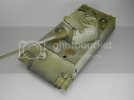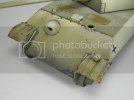collin26
New Member
- Joined
- May 1, 2010
- Messages
- 61
If anyone here is a bit afraid of jumping into color modulation or unsure how the effect will look before weathering & after weathering......
Here are a few pics. of a Panther that was painted in the Color Modulation style and only weathered in the glacius plate.


You can see in the images, the difference between the front hull plate and all other areas of the vehicle. The extreme color shift is toned down quite a bit by weathering steps.
Hope this is helpfull and encouraging!
Here are a few pics. of a Panther that was painted in the Color Modulation style and only weathered in the glacius plate.


You can see in the images, the difference between the front hull plate and all other areas of the vehicle. The extreme color shift is toned down quite a bit by weathering steps.
Hope this is helpfull and encouraging!
